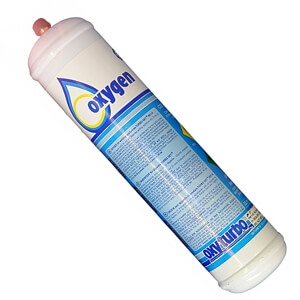Oxygen COSHH Assessment Form

A three-page COSHH Assessment Form, with some example text reading:
Health risks: Adverse effects are not expected from this product.
Skin contact: Adverse effects are not expected from this product.
Eye contact: Adverse effects are not expected from this product.
Ingestion: Ingestion is not considered a potential route of exposure.
Inhalation: Continuous inhalation of concentrations higher than 75% may cause nausea, dizziness, respiratory difficulty and convulsions.
Liquid oxygen (LOX) is a clear, pale blue liquid at cryogenic temperatures. It serves as a crucial medium for storing and transporting large quantities of oxygen. The production of LOX involves a meticulous process of compressing atmospheric air and cooling it to extremely low temperatures, which allows for the efficient separation of oxygen from its gaseous counterparts, primarily nitrogen and argon, owing to their differing boiling points.
Visually, LOX is characterised by its striking pale blue hue, indicative of its extreme coldness and properties. The boiling point of liquid oxygen is approximately -183°C (-297°F), which places it among the coldest liquids in industrial applications. Its significantly low temperature requires specialised equipment for handling and storage to ensure safety and efficiency.
In addition to its remarkable physical characteristics, liquid oxygen exhibits paramagnetic properties. This means it is attracted to magnetic fields, a phenomenon that stems from the unpaired electrons in its molecular structure. This property opens avenues for various scientific applications and studies involving magnetism.
The creation of liquid oxygen is achieved through a process known as cryogenic distillation. During this process, atmospheric air is subjected to high pressure and cooled to extremely low temperatures. As the air cools, the various gases present liquefy at distinct temperatures. Since oxygen has the lowest boiling point among its atmospheric constituents, it remains liquid while other gases, such as nitrogen and argon, transition to gaseous states at higher temperatures. This process allows for the effective concentration and collection of liquid oxygen. As a powerful oxidiser in rocket fuel formulations, it is an invaluable resource in several industries, particularly aerospace.
This document is:
- Recognised by local authorities
- Recognised by principal contractors
- Suitable for CDM sites
- Approved by H&S managers
If you want others to have confidence in your company, download and buy the proper documents today.
As with all our documents, our risk assessments are in Word™ format and available for instant download and use. You only need to buy them once.
Once you buy and download this document, it’s yours for life to use repeatedly.
Why not browse the HSEDocs catalogue of method statements, risk assessments, COSHH assessments, or industry-specific packages?
And for safety training relevant to your job, visit our online training courses.
GET THIS DOCUMENT
£8.99+VAT
- Available in Word™
- Fully customisable
- Add your Company Logo
- UK & EU Compliant

 CART
CART 